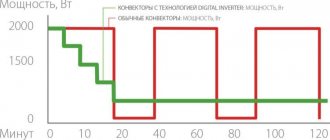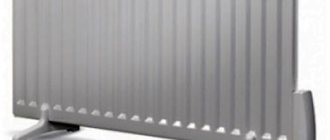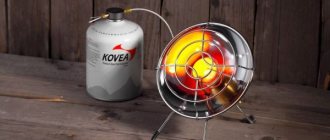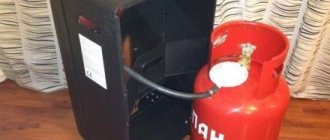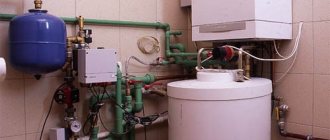With the cold weather approaching, have you thought about buying a device for heating a room with minimal fuel consumption? You've heard that a catalytic gas heater is compact and quite efficient, but, unlike most gas appliances, it is absolutely safe. Is this really true? Agree, buying an expensive “pig in a poke” is not in your plans.
We will help you understand this type of heaters - in our publication we will talk about the design features and operating principles of catalytic devices. Let's look at how they provide high thermal efficiency and provide recommendations for choosing the appropriate model. We will also pay attention to the best manufacturers who have received the largest number of positive reviews from customers.
Catalytic gas heaters for home, cottage or camping
When winter comes, you always want to be warm and cozy. This is what causes increased demand for home heating systems during the colder months. In various stores there is a huge number of heating burners, which differ in design, operating principles, and the design of the heating element. Nowadays, anyone can appreciate a new device - a catalytic heater. This article will discuss this heating device, its positive and negative sides, and points that you need to pay attention to when purchasing.
Operating principle of catalytic heating
Almost all heaters that rely on burning fuel to produce thermal energy have one common drawback . When the combustion process occurs, a very large amount of combustion products is released. This leads to the need to take care of removing these harmful products from the body and providing a constant supply of air.
Heaters with catalytic heating simply do not have this drawback, since the fuel is burned without the help of a flame. Heating occurs as follows:
- The catalyst burns up to 200–500 degrees Celsius;
- The air-fuel mixture is prepared in specially designated chambers;
- A plate made of fiberglass is heated. It is supplied with vapors of gasoline or liquefied gas;
- Catalysts ensure flameless combustion.
The catalytic burner is very safe and environmentally friendly; it is more efficient than a conventional gas burner. This is what allows her to achieve such popularity.
Conclusions and useful video on the topic
Recommendations for choosing devices, main design differences between models:
The feasibility, pros and cons of using a catalytic heater in the following video:
The process of applying a catalyst to the surface of a plate at home:
How catalytic combustion occurs is a visual experiment in the following video:
Catalytic gas heat generators are an excellent option for temporary heating of various premises, heating garages, tents, and greenhouses. They are completely safe: during their operation no harmful combustion products or unpleasant odors are released.
A large selection of sizes and designs makes it easy to choose a device, both for stationary use and one that you can easily take with you on the road. When choosing a catalytic heater, you need to focus on the operational characteristics of the room, individual requirements, financial capabilities
It is also important to give preference to reliable manufacturers with a positive reputation in the market
Do you use a gas heater with a catalytic plate and want to share your opinion about the advisability of purchasing such a device with other users? Tell us about the pros and cons identified during operation, add unique photos of your heater model in the block located below.
Types of catalytic heaters
There are several types of such equipment . They differ in the principle of operation and the fuel that is used. The internal structure always affects the technical characteristics. There are three types of catalytic equipment. Let's look at each of them in more detail.
- Gas equipment . This is a model powered by a cylinder containing liquefied gas. Propane - butane mixture can be used as fuel. Typically, such equipment is used in garages or country houses. And similar heaters are often used for heating construction sites or auto repair shops. A special feature is that when used, soot and other harmful impurities are not released. Using such a heater, you can heat rooms with an area exceeding 20 square meters;
- Gasoline heater . Such a device has its own fuel tank, which is connected to a catalytic cartridge. Gasoline vapor goes directly to the catalyst, this is where oxidation occurs. The device is quite small, which is why it is quite popular among fishermen, hunters, and those people who love sports tourism. The heater is also purchased by people who are often outdoors in tents. The device is also suitable for people who have a small dacha;
- Equipment using technical alcohol . This is also a small-sized model that is intended for field conditions. During the combustion process, you can get a good amount of heat to warm your hands or dry your clothes. It is also good for heating water or heating food. The equipment is light in weight. No more than 2 kilograms.
Differences from gasoline and multi-fuel models
Gas appliances are the most common, but not the only type of catalytic equipment. Heating units can also operate on other types of fuel.
Depending on this criterion, three more types of devices are distinguished:
- Gasoline . Devices with a built-in fuel tank connected to a catalytic cartridge. Gasoline vapors in them enter the cartridge and undergo oxidation when interacting with the catalyst. Mobility and modest size contribute to the particular popularity of gasoline heaters among outdoor enthusiasts, hunters, and fishermen.
- On technical alcohol . Designs with a special internal compartment into which a container with alcohol or dry fuel is placed. They are presented in small-sized models weighing no more than 1.5-2 kg. They are used exclusively in field conditions: they heat tents, dry clothes, and heat food and drink.
- Multi-fuel . Universal heaters that work with any available type of fuel, both gaseous and liquid. They are characterized by rather limited power - 500-1200 W.
Apart from external characteristics, there are no significant differences between gas, gasoline and multi-fuel catalytic heaters. They all work on the principle of catalytic combustion and have a similar internal structure.
The main advantages of gasoline and multi-fuel models are mobility, compact dimensions, and relatively affordable price. As for technical and operational parameters, gas installations are an order of magnitude superior
Gas appliances are easier to maintain, have high performance, and are designed for a wide range of applications.
Gasoline devices are a little more difficult to operate. To ensure efficient and uninterrupted operation, you need to fill them with gasoline of the highest purity.
Infrared or normal?
The heaters have thermal ceramic panels and reflectors that provide local targeted effects. The operating principle is based on the conversion of heat energy into infrared radiation. Such models can be used in the home or for heating outdoor areas.
Infrared and catalytic heaters use gas as fuel. This provides good performance. Household heaters that use liquid fuel or gas, but do not have infrared radiation, are also in great demand. Among such devices there is a fairly miniature device that is easy to carry with you, and there are also quite large installations, the dimensions of which resemble a large boiler. This device perfectly heats the air in the room. That is why, in order to increase productivity, the unit has a fan heater.
Research shows that infrared heaters using bottled gas are suitable for heating a room larger than 20 square meters. But such devices are not recommended for small rooms. Brands of catalytic heaters.
Device
The oven is designed as follows:
- The catalyst is the main element for operation. But there are models that also have a tubular electric heater, which also provides additional heat;
- Metal body. The body is placed in the fuel. There are also models that simply do not have a body and can be used for hiking and heating a tent.
- A fan, with its help you can distribute warm air throughout the room faster and more efficiently;
- Some models even have a horizontal position sensor. The device turns off immediately if it is not installed correctly.
- Flame sensor, if the flame exceeds the permissible limit, the burner will also go out.
- Carbon dioxide level sensor. The device will turn off automatically if carbon dioxide exceeds the permissible limit in the room.
Best models
Quite a few manufacturers provide equipment that is of high quality. The following will be a list of models that were selected based on positive consumer reviews .
- Gas equipment produced by the Italian company Bartolini pullover k is very popular in the market and has won the hearts of Russians due to its reliability, safety and ease of operation.
- A portable and very small catalytic gas device for a tent is manufactured by Campingaz. There are several modifications. They differ in the type of purpose. When traveling, it is very convenient to use the Bluecat gas model. Ignition occurs thanks to a piezoelectric element. The price is relatively low;
- Catalytic hand burner. Powered by alcohol. This is a very small model that can fit in the palm of a person. A heater called Kovea is especially popular. The main advantage of this device is its very thoughtful design, as well as its operating efficiency. The company also sells special technical alcohol that is suitable for this particular heater;
- A portable catalytic device that is used for a tent. This device runs on gasoline. The heater is manufactured by an American company called Coleman. This company specializes in the manufacture of various accessories and devices for hiking. The heater operates on special cartridges that are filled with gas. Usage time without refueling - 14 hours;
- A heater that is used to heat a home. This is a very powerful and productive unit manufactured by Bartolini. This heater has a fan heater that operates autonomously. Very well suited for heating living spaces and used as a main or auxiliary heating source;
- Campingaz cr 5000 turbo. A wonderful model from a French company. Perfect for a house with an area of 30 square meters. The price is quite affordable;
- There are also multi-fuel devices that can be filled with any fuel. They are small in size and suitable for winter fishing.
Gas infrared heater Bartolini pullover k is designed for heating houses, utility rooms, garages and so on.
Reviews:
Review of the best manufacturers
An extensive range of catalytic heaters is represented by various imported and domestic brands. Let's look at several manufacturers whose products are recognized by consumers as the best in this area.
No. 1 - reliable and functional Bartolini devices
Heating equipment from the Italian brand Bartolini is most in demand on the market. The company produces quite powerful devices with a performance of 2900 to 4200 W, running on liquefied gas.
The main emphasis in production is on the independence of equipment from the availability of communications.
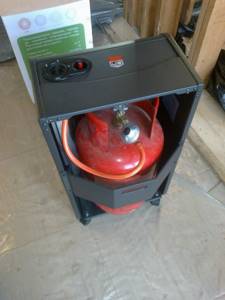
Almost all presented models are equipped with gas cylinders built into the body, have several power modes with the possibility of stepwise adjustment, and are offered in different configuration options. The operation of the devices is based on the conversion of thermal energy into infrared radiation
Heaters from an Italian manufacturer can be purchased at prices ranging from 11 to 18 thousand rubles. They are distinguished by good quality, reliability, and economical fuel consumption.
Most of them have CO2 monitoring sensors and rollover shutdown systems. The Bartolini pullover k model is especially in demand among buyers .
No. 2 - compact and economical models from Campingaz
The next most popular company is Campingaz. This French company produces efficient and safe gas heaters for residential, warehouse, commercial and industrial premises. Special attention is paid to portable equipment that ensures a comfortable stay in nature.
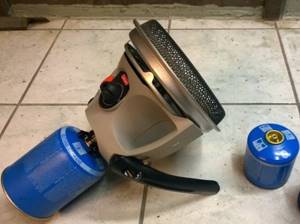
Campingaz heaters are characterized by small dimensions, stylish modern design, and long service life. They are equipped with reliable analyzer sensors that guarantee safe operation of the device
Brand devices provide excellent heat transfer and have European quality certificates. Their production uses new technologies for economical fuel consumption.
The average cost of products is 11 thousand rubles. The best representative of the range is considered to be Campingaz cr 5000 turbo .
No. 3 - convenient and safe Kovea brand heaters
The Korean company Kovea offers customers gas heaters of various designs. Mostly these are compact, portable, low-power models that operate on the basis of infrared radiation.
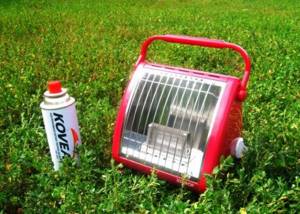
The main difference between Kovea heaters is the simplicity of the device, compactness and light weight. They are very convenient to use, but are designed for heating a small area. They are mainly used outdoors, on hikes, in small garages and utility rooms.
The Korean manufacturer practically does not use plastic elements in the design of its devices, which further increases the safety of operation. The average price of products is 5-8 thousand rubles.
No. 4 - inexpensive and durable heaters from Argo
A budget option for a catalytic heater is offered by the domestic manufacturer Argo. The gas heat generator of this company is designed for heating industrial premises, garages, and verandas with normal air circulation. Farmers often use it in greenhouses and barns.
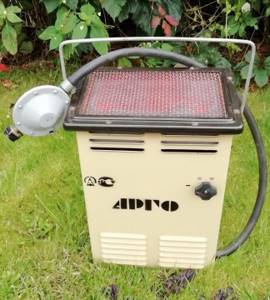
The device operates on gas supplied through a special hose from a 5-15 liter cylinder. With a performance of 2900 W, 250 g/h of fuel is consumed. Despite the minimal percentage of carbon dioxide emissions, the device cannot be used in poorly ventilated areas
With not too large dimensions, the weight of the device is 6.7 kg. It does not have wheels, so it is quite difficult to move it over long distances. But for stationary use it is quite suitable. The approximate cost of the device is 2000 rubles.
Does the catalytic version of the device seem unreasonably expensive to you as a temporary heater for a summer house? We recommend that you familiarize yourself with other gas appliances suitable for heating temporary premises.
Pros and cons of catalytic heating
Advantages of heating using a catalyst:
- Has a good effect on the microclimate. Catalytic heating is notable for the fact that during its operation a small amount of oxygen is burned. And also various harmful substances are not released;
- Safety. When operating such a heater, the possibility of fire and poisoning by various gases is eliminated. All this allows you to safely turn on the burner both in tents and in houses, without the risk of accidental ignition;
- Autonomy. Each device has a thermostat that can be set to any power. When all modes are set, the device operates independently;
- Mobility. Even the largest heaters can be easily moved, as they have special wheels for easy movement. And small devices have very little weight, which allows you to put the device in a bag and move it. Perfect for moving to the country, for example;
- The price is reasonable.
You can always find flaws in any equipment. And catalytic equipment is no exception.
Minuses:
- Refueling. The heaters will run for approximately 2,500 hours on average. The catalyst will gradually burn out with use. And also, after a certain period of time, the catalytic panel will need to be replaced, and it costs about 2/3 of the finished heater;
- There is a possibility that the device will soon fail, since it runs on gasoline and industrial alcohol. But this will only happen if you use low-quality fuel.
Advantages and disadvantages
The infrared gas burner is a compact and simple device. Each person can connect it independently without any problems in a few minutes.
The advantages of an infrared gas burner include the following characteristics:
- high reliability - the design of the unit is quite simple, so the likelihood of breakdown is minimal;
- emitters can last a long time, and the device’s lifespan exceeds thirty years;
- the small dimensions of the hiking emitters make it easy to put them in a travel bag;
- profitability - GII has low gas consumption, so such devices are more profitable than electric options, especially when constantly heating large rooms;
- these units are among the safest heating devices;
- high heating efficiency.
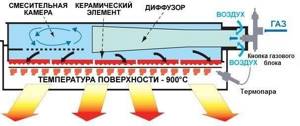
Of course, this device also has its disadvantages.
These include the following:
- presence of open fire;
- the operation of the device is based on the combustion of oxygen, so it is advisable to use it in well-ventilated areas;
- The main disadvantage of the unit is the smell from the heater.
Before deciding to use such a heater, you need to weigh all the pros and cons. As follows from the information given above, the use of this device is not advisable in every case.
In an indoor workplace with good air circulation, GII is an excellent choice, but in confined spaces it is better to consider other options.
The use of GII in ventilated areas is due to their harm to health due to gas combustion. Infrared radiation itself does not have any negative effects.
It should be noted that all negative effects with the use of the device are associated solely with improper operation.
There are several requirements that are recommended to be met:
- the duration of operation of the unit should not exceed twelve hours;
- if the heater is connected to the main network, it is better to turn it on for the first time in the presence of a specialist;
- The device must be protected from accidental human touch, since its operating temperature is 900 degrees.
Are catalytic emitters harmful?
Perhaps someone will think that such heaters are harmful to health. But this is completely wrong. Catalytic heaters are not dangerous to human and animal health. Of course, during work you should follow all safety measures that will be indicated in the instructions.
Safety is guaranteed by the following factors:
- Infrared radiation uses special low-spectrum waves that have a positive effect on humans;
- The heater uses combustion of fuel without flame due to oxidation. This means that carbon monoxide vapor will not accumulate in the house.
Catalytic heaters have recently appeared on the market. You can buy a catalytic heater in a specialized store or on the Internet. This system has gained great popularity thanks to lovers of active recreation . Such heaters are very good at heating tents or even large construction sites. Catalytic heaters are very efficient and can be used in large living spaces.
How to choose for a hike?
Before you buy such a stove, you need to decide for what purposes it will be used. You also need to take into account the cost of the equipment and customer reviews. You can determine the required power using the information provided by the manufacturer on the packaging.
The gas type of slow burning stoves has appeared recently, but they are also convenient, safe, and environmentally friendly. They are in demand among outdoor enthusiasts. Such devices have good efficiency, reasonable price and can be used in any conditions.
Many manufacturers who provide such equipment guarantee excellent quality and high performance. Consider a list of some models that are in demand among consumers:
- Hyundai H-HG2-23-UI685;
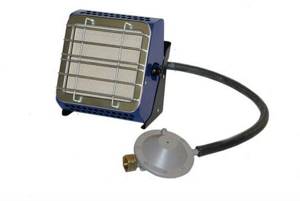
- Kovea H-0710 Fire Ball;
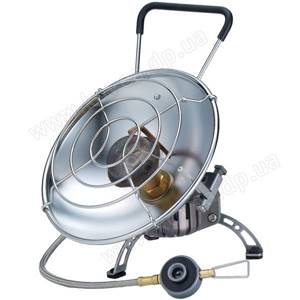
- Kovea KH-0203;

- ElekonPower TT-15S;

- ElekonPower TT-30S;
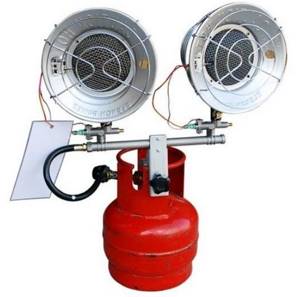
- Elekon power PG3B.
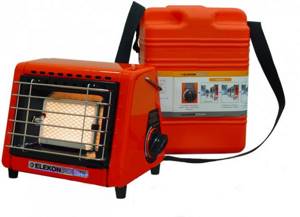
In markets and stores you can find all the presented models fully equipped. All that remains is to decide on your financial capabilities and make a purchase.
Device diagram and operating principle of a catalytic gas heater

Catalytic heaters can be made in several versions, one of which is a catalytic gas heater for a summer residence.
The design of the heater is an autonomous or semi-autonomous device, the technical capabilities of which allow it to heat rooms with a total area of ≥ 25 m2 to comfortable temperatures. Let's consider the principle of operation of the device using the example of such products as bartolini catalytic gas heaters.
The principle of its operation: burning natural gas comes into contact with a special plate, onto the surface of which a catalyst is applied. At high temperatures provided by the combustion process, with the participation of atmospheric oxygen, an exothermic oxidation process begins.
Most often, the following materials are used as a catalyst in heaters of this design:
- Fiberglass forms the basis of the panel, on top of which a very thin layer of the catalyst itself is applied. Its role, in this case, is played by platinum powder.
- A special three-component composition, which has parameters that are significantly superior to the model with platinum-based catalysts.
The surface of the catalytic plate is initially made with a large number of small holes. It is through them that gas enters it. During the combustion of natural gas, an oxidation reaction is initiated, which is exothermic. The consumption of the gas burned in this case is negligibly small, since the heating of the room is not carried out due to its combustion and does not depend on the power of the combustion torch.
The combustion process itself is required solely to initiate the oxidation reaction. Therefore, this mode is called flameless, despite the fact that in fact some kind of flame is present.
A catalytic gas heater can operate not only on liquefied gas (almost all portable and mobile versions and models) or on natural gas supplied through the centralized gas supply network.
The vast majority of catalytic heaters of this type have the following elements and devices:
- Casing or housing;
- Low power gas burner;
- Heat exchangers;
- Refillable or replaceable gas cylinder;
- Heating elements.
Gas can be supplied not only from a cylinder, but also from the main gas pipeline.
The following can be used as additional devices to facilitate the operation of such products:
- ignition device;
- thermostat;
- automatic shutdown;
- software control, etc.
Based on the types of designs implemented, existing models of such catalytic heaters can be made in a monolithic design, when a container for liquefied gas is built into the heater body. The maximum capacity of such a cylinder is ≤ 27 cubic meters. The second possible design option does not have a housing; there is only a plate impregnated with special catalysts.
Operating principle and selection criteria for a catalytic heater
The heating equipment market is represented by both new products and well-known heat sources. Long-used devices include catalytic heaters, known in Russia since the middle of the last century. Since then, the design and efficiency of this equipment have changed significantly for the better. Today these are modern, stylish devices that provide thermal comfort in a variety of conditions.
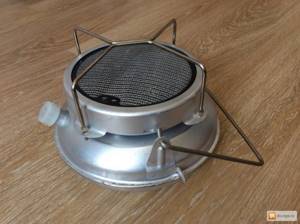
What are catalytic heaters?
Any heating technology has its advantages and disadvantages. Catalytic heaters have much more of the former than the latter. These devices are mostly compact and light in weight, and represent a fairly powerful source of heat.
A distinctive feature of this equipment is absolute safety and the absence of harmful emissions.
Why is it needed and where is it used?
A catalytic heater, like any other, is necessary to generate thermal energy. Due to its simple design, compactness and light weight, it is most in demand for creating a comfortable microclimate in small spaces. Traditionally used for heating:
- tents,
- utility blocks,
- garages,
- workshops,
- small greenhouses.
How it works: device and principle of operation
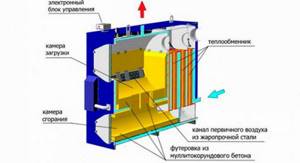
But the average user does not need to delve into the intricacies of chemical reactions. The process of generating heat through catalytic plates is commonly called “oxygen combustion,” which occurs upon contact with the surface of the heater. But in fact, it’s difficult to call it combustion, since in this case there is no flame. It is more correct to consider this process as a chemical oxidation reaction with the release of heat. The operation process of a catalytic heater is as follows:
- a fiberglass or microporous plate is heated to a temperature of 200-500°C;
- at the same time, a fuel-air mixture is created in a separate compartment of the combustion chamber;
- it is fed to the plate, where a reaction occurs, releasing heat.
Thus, the operating principle of a catalytic heater is the oxidation of fuel combustion products.

Reviews of catalytic heaters: pros and cons
Pros:
- does not burn oxygen;
- does not release harmful substances into the environment;
- fireproof;
- independent from the power grid;
- simple and easy to transport.
The main disadvantage of this thermal equipment is considered to be a small working life: within 2.5 thousand hours. Another “minus” is that when using poorly purified fuel (alcohol or gasoline), the device quickly fails.
Gas, petrol or infrared?
Based on the type of fuel, there are three categories of catalytic heaters:
- gas;
- gasoline;
- operating on alcohol or dry fuel.
Gas units are traditionally used as backup appliances for heating garages, summer kitchens, country houses, verandas, and workshops. The efficiency of this equipment is extremely high: close to 100%. The catalyst ensures more efficient use of fuel and accelerates its combustion process.
This achieves faster heating of the premises.
A gasoline catalytic heater differs in design: the fuel reservoir is connected to the catalyst with a special cartridge. These devices are very popular among tourists, fishermen, and hunters. Modern models are more convenient for use in natural conditions, as they are equipped with cooking grates.
Gasoline is one of the best catalytic heaters for a tent.
Devices running on technical alcohol and dry fuel, just like gasoline ones, are intended for use in field conditions. The heat they generate is enough to dry clothes and cook food. Multi-fuel heaters have also been developed. Infrared can operate on liquefied or natural gas, gasoline.
Any of these devices are most convenient for creating local thermal zones in open space.
Manufacturers and popular models: ranking of the best and prices
The choice of catalytic heaters is wide, but the model range is represented by a small number of manufacturers. These devices are not produced by all companies specializing in the production of thermal equipment. A review of the best models of this equipment will allow you to evaluate all the advantages of catalytic heaters of each brand.
Bartolini Pullover K
One of the most presentable heaters running on liquefied gas. The catalyst is made of fiberglass, coated with a layer of powdered platinum. Reliable and durable. The device is silent, economical, and can quickly heat a fairly large area: up to 30 m2. Operational safety is ensured by a control system for heating temperature and the angle of inclination of the housing.
Characteristics:
- power - 2.9 kW;
- dimensions - 430x780x420 kg;
- weight - 14 kg.
Cost 10950 rub.
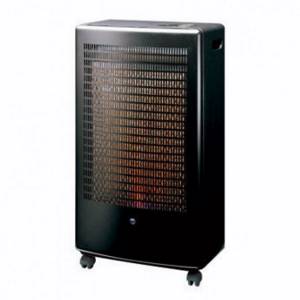
Heater Bartolini Primavera K
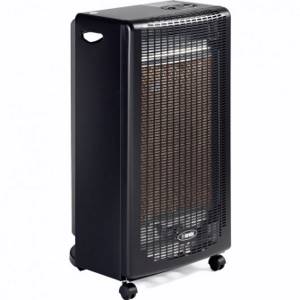
A stylish heater that runs on bottled gas and is equipped with a fan heater. It differs in design from the previous model. All technical characteristics and capabilities are the same. Average price 10950 rub.
Comfort “Umnitsa” OK-2.9 kW
Catalytic heater running on kerosene. Ignition is carried out by igniting the retractable wick. The device is equipped with a mechanical thermostat that allows you to regulate the heating temperature in steps of 1°C. Widely used in camping conditions and at dachas. The main functions are heating the surrounding space and cooking. The fuel tank capacity (4.5 l) is sufficient to ensure continuous operation of the device for 16 hours.
Characteristics:
- power - 2.9 kW;
- weight - 5.2 kg.
Cost 2990 rub.
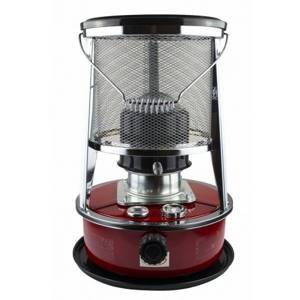
Heater GIM2-01 infrared radiation
The device is equipped with a microporous ceramic catalyst and is compact and light weight. Ideal for heating tents and rest areas in the field. Infrared radiation can be directed in the desired direction, thereby creating an oasis of warmth in the right place. Maximum heating of the radiating panel is 800°C.
Characteristics:
- power - 0.75 kW;
- dimensions - 80x100x180 mm;
- weight - 700 g.
Cost 570 rub.
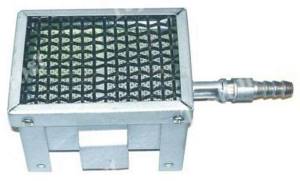
Catalytic heating device COLEMAN BLACKCAT
Heater powered by propane. The catalytic plate is made of glass fiber coated with platinum. The heating element is quite large: 20 cm in length. The device is lightweight and compact, mechanical control. To turn on the heater, you must turn the fuel supply knob and press the piezo ignition button.
Characteristics:
- power - 1 kW;
- dimensions - 250x240x190 mm;
- weight - 1.2 kg.
Cost 4230 rub.

"ARGO" infrared, 2.9 kW
The heater with a microporous ceramic catalyst can operate from liquefied and main gas. To switch to another type of fuel, it is equipped with an appropriate nozzle. Supplied with a 1 m long gas hose and clamps to secure it.
Characteristics:
- power - 2.9 kW;
- dimensions - 420x330x210 mm;
- weight - 6.7 kg.
Cost 2370 rub.

Which manufacturer and which type is better to choose: TOP-3
Those who have repeatedly used catalytic heaters recommend choosing ARGO products. These brands have earned the trust of the user with the high quality of their products.
What to consider when choosing a device?
When choosing a catalytic heater, you first of all decide on what type of fuel will be most convenient and affordable.
In terms of continuous operation, multi-fuel models are the most advantageous, but they are more cumbersome than all others.
The power of this thermal equipment is also important.
3 best models
According to user reviews, among the range of catalytic heaters there are three best models:
- Bartolini Pullover K;
- Comfort “Umnitsa” OK-2.9 kW;
- "ARGO" infrared, 2.9 kW.
These devices have a long service life, are easy to transport, efficient and economical.
Price
The cost of catalytic heaters primarily depends on their power and the type of heating element. Compact low-power devices can be purchased for up to 1000 rubles: “GIM2-01” infrared radiation - 570 rubles.
More efficient models are more expensive, in the range of 2-4 thousand rubles:
- Comfort “Umnitsa” OK-2.9 kW - 2990 rubles;
- COLEMAN BLACKCAT - 4230 rubles;
- "ARGO" infrared, 2.9 kW - 2370 rub.
The price for powerful large-sized installations starts from 10 thousand rubles:
- Bartolini Pullover K - 10,950 rubles;
- Bartolini Primavera K — 10950 rub.
Where to buy a catalytic heater?
In Moscow
- "Argo"; metro station "Teatralnaya"
- "Bartolini"; st. Baikalskaya, 1;.
- "Alfamarket"; st. Krasnokazarmennaya, 14A, building 17; +7 (925) 589-66-5
In St. Petersburg
- "SPb-Picnic"; st. URALSKAYA, house 1;.
- "All heaters"; emb. Obvodny Kanal, 122, lit. B; +7 (812) 495-95-85.
- "HeatingLux"; Savushkina 89;
Safety precautions and operating rules
In order to ensure the safe operation of catalytic heaters, manufacturers have developed a number of rules.
- Do not cover the operating device with cloth, paper or objects.
- It is unacceptable to direct the flow of infrared rays to a gas cylinder, household and electronic equipment.
- Heaters are used in rooms with access to fresh air.
- It is prohibited to refill the gas cylinder yourself.
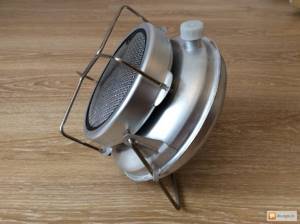
Catalytic heaters are one of the few that can provide thermal comfort in difficult field conditions. The undoubted advantage of this equipment is its compactness and ease of transportation.
May 9, 2018ventsyst
Characteristics of gas heaters and tips for choosing a device

Having decided to purchase a heater of a similar operating principle, when choosing a model you need to pay attention to the following issues:
- It is necessary to decide on the device (the main question is the principle of its operation, which is chosen taking into account the upcoming operation).
- Then you should determine the power of the heating device you require. The calculation of the specified value is carried out taking into account the characteristics of the heated room (volume and quality of existing thermal insulation). In cases where the heater is used outdoors, the dominant parameters are the geometric dimensions of the heated premises.
- The ability of the heating device to operate on energy sources other than gas, such as electricity.
- Make sure that the design has built-in high-quality systems that provide control of the heater’s operation and protection against exceeding the maximum permissible concentration of combustion products in the air.
- It is advisable to familiarize yourself with the additional design capabilities of the model you have chosen and the existing service functions (for example, adjustments: automatic and manual).
Choosing the optimal heater
When choosing a suitable heater, you need to take into account many nuances, evaluate the convenience of the design, functionality, additional features and equipment of the model you like. Let's consider the main criteria for making the right choice.
Criterion No. 1 – place and conditions of application
The first step is to decide on the purposes for which you plan to buy a catalytic device. The optimal type of design and the set of characteristics required in this case depend on where and under what conditions the device will be used.
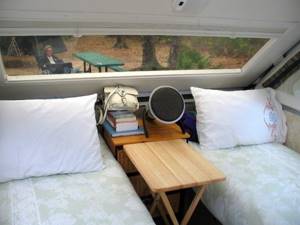
For outdoor work, small portable devices are designed that easily fit in a backpack and do not depend on the availability of communications.
The main indicators should be selected taking into account the conditions of upcoming operation and the parameters of the heated object. It is necessary to take into account the expected frequency of use, heating area, and preview reviews of real customers about the model.
So, to heat rooms, it is worth buying larger heaters with sufficient power and automatic safety sensors. If the device will need to be moved frequently, it is better to choose a mobile design on wheels.
Criterion No. 2 – technical characteristics
One of the main parameters of a heater is power. To choose a device with the correct performance, you should perform preliminary calculations, consult with the seller, and carefully study the instructions. The technical documentation must indicate what area the power of a particular model is designed for.
In addition, you need to pay attention to the following characteristics:
- gas consumption - how much fuel is required for operation, is the device economical;
- dimensions - what is the width, length and height of the device, is there enough space in the room to provide free space around it (1.5 m in the front, 0.2 m in the back and sides);
- control type - mechanical or electronic;
- the weight and volume of the intended cylinder - is the device too heavy, how difficult will it be to move and install.
It is important to check the packaging and its compatibility with the equipment. The standard kit includes a reducer, a gas hose, and sometimes a cylinder. If any of the elements do not fit with the device, you must purchase suitable adapters.

The range of catalytic heaters includes models with different performance ranges. Devices with a power of up to 2.9 kW are capable of heating an area of 30-35 m². Power of about 4 kW is suitable for rooms up to 60 m². There are also low-power devices that heat no more than 12 m². Their productivity is about 1.2 kW
It is desirable that the heater be equipped with additional design and functionality.
The main additions and features are as follows:
- automatic power control in several modes;
- horizontal position sensor that turns off the device in case of sudden mechanical impact, distortion, or overturning;
- indoor carbon dioxide level control system;
- infrared heating;
- piezo ignition;
- electric turbofan;
- overpressure relief valve.
For greater ease of use, you should choose a device with wheels for free movement, handles, and stand legs that can be installed in different positions.
Best gas heaters 2021

The combined gas heater Bartolini Pullover I Turbo Plus has 3 heating strips made of microporous ceramics, as well as a 2 kW fan heater. The model is very effective thanks to two types of power supply. Gas heating is carried out independently of the electrical network, and the electric fan heater can be turned on both simultaneously with the gas burners, and in autonomous mode, if suddenly problems arise with the gas supply.
Thanks to this versatility, the model is able to quickly heat and uninterruptedly maintain heat in a house with an area of up to 100 m2. By the way, a well-thought-out safety system allows you to use the device indoors - platinum coating on the heating panel helps to avoid CO2 leakage, there is a gas control, a fall shut-off sensor, and power adjustment.
A nice bonus is that the gas cylinder is covered with a plastic casing, which makes the heater look like a fireplace.
+ Two types of power + There is gas control and rollover protection + Powerful heating + Economical
If we talk about models designed only for outdoor work, then the Ballu BOGH-15 is truly the best option. It is not only multifunctional, but also quite effective, and also meets all the necessary requirements in the field of safety and environmental friendliness.
The device is turned on with the electric ignition button, which is located directly on the body. The height of the flame in a glass flask (of course, resistant to high temperatures) can reach about one and a half meters. The maximum heating radius of this heater is 3 meters, and the area is about 28 m2.
As for safety, the device is equipped with several types of sensors that will turn off the gas supply if an emergency situation occurs. In this case, the metal elements will not heat up to extremely high temperatures, which eliminates the risk of burns. The pyramid is positioned stably, with a gas cylinder located at its base. This heater will make your terrace warm and cozy in any weather.
+ Stylish design + Simple controls + Security
– High price – High gas consumption
The Timberk TGH 4200 M1 gas heater is one of the most economical. Its power varies depending on the set mode. Thanks to this, a 15-liter propane-butane cylinder will last for almost 15 hours of continuous operation in economy mode and up to 7 hours at maximum power.
In addition to efficiency, the device’s safety system also deserves attention. Built-in sensors for flame, tilt of the device and oxygen content in the room, if necessary, quickly shut off the gas supply to the burner. This model is perfect for an apartment, a private house, or a summer house.
+ Piezo ignition + Powerful heating + Numerous sensors for protection against emergency situations + Low gas consumption + Convenient wheels for transportation + Power adjustment
– There is no switch – to turn it off you need to turn off the gas supply
This is an excellent choice for a private home or cottage where there is no separate room for a gas boiler or little space to install a heater. The Alpine Air NGS-20F gas heater is wall-mounted and provides amazing efficiency. With a power of 1.9 kW, the device is capable of heating a room up to 38 m2.
The main advantage of this model compared to competitors is durability. The device is equipped with a cast iron heat exchanger, the life of which is at least 50 years. All your electronics may fail, but you don't have to worry about the heat exchanger for the next 50 years.
The Alpine Air NGS-20F gas wall heater combines reliable and time-tested technologies combined with modern electronics. Electronics are responsible for the safe operation of equipment, and technology is responsible for heating the room.
Depending on the configuration, this heater can consume fuel from a gas cylinder or directly from the main gas system. In the second case, it is better to install a full-fledged gas boiler. For a dacha, a wall heater with a gas cylinder is enough.
+ Durability + Powerful heating + Power adjustment + Economical
– Combustion products are vented outside through a special coaxial tube, which must be vented outside the room
Which brand of gas heater should I choose?
Various companies are fighting for global leadership in this field, but among them there are clear favorites, whose equipment is distributed in many countries.
Among the best representatives of the segment are:
The first company has its headquarters in Hong Kong, but its branches are spread all over the world. Large offices are located in Japan, Lithuania, Korea, Poland and China. The main specialization of this corporation is climate control equipment. Her department has a large design bureau and experimental design laboratories.
Another concern originating in Asia is Timberk, which has existed since 2004. The marketing network covers all of Eastern Europe, Russia, and CIS countries. The range includes more than 120 types of climate control products, including split systems and heaters.
It acts as a highly specialized company with domestic production and export to neighboring countries. In business since 1991, it has focused its activities on outdoor equipment and gear, of which compact gas heaters are an integral part.
The Italian company Siabs also actively uses innovative technologies, whose models have no analogues and are reliable in operation.
Catalytic gas heater: characteristics and review of the best models
The issue of heating is more relevant in our area than anywhere else - the rather harsh climate forces us to think through home heating systems in the cold season. But when it comes to autonomous systems that do not require high costs and complex installation, many questions arise. Let's consider one of the most popular options - a catalytic gas heater: advantages, disadvantages, as well as features of use.
Catalytic gas heater in a country house, stylized as a wood-burning fireplace
Catalytic gas heater: operating principle of the device
Catalytic heaters appeared in our country relatively recently, but this has not stopped them from currently occupying a worthy position in the market. The principle of their operation is fundamentally different from those used in other gas appliances. In the standard scheme, fuel entering the burner undergoes combustion, resulting in the release of thermal energy.
Diagram of a catalytic gas heater
Among the disadvantages of this method of heat extraction is the fact that the process releases a large amount of combustion by-products. This negatively affects both the efficiency of the devices and the ratio of oxygen and carbon dioxide in the room. These disadvantages are unusual for catalytic heaters, since their operating principle is different.
The process of burning fuel in a catalytic gas heater does not involve the presence of a flame. Instead, the following processes occur:
- When the device is turned on, the surface of the catalyst begins to heat up. Depending on the selected mode, the temperature can range from 200 to 500 °C;
- at this time, the air-fuel mixture is prepared in a special chamber;
- liquefied gas is supplied to the heated catalyst plate, which, under the influence of all factors, burns without forming a flame.
Typically, the plate used in catalytic heaters is made of fiberglass with platinum powder added to it. This allows the device to be not only safe, but also environmentally friendly. In addition, the thermal efficiency of such a system is significantly higher than that of standard gas burners, which explains the popularity of these devices.
Operating principle of a catalytic gas heater
What is it and how does it work
Catalytic heaters are devices that produce heat through oxidation. To do this, a catalyst plate is located in the body of the device; when fuel enters it, a reaction occurs, resulting in the generation of heat.
Fuel consumption is carried out in a flameless manner. And this eliminates the formation of combustion products, which makes the device environmentally friendly and safe. In terms of efficiency, the heater outperformed a standard gas burner.
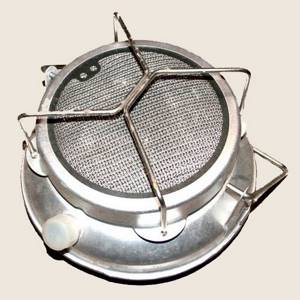
All of these factors explain the growing consumer confidence. Heating occurs according to the following scheme:
- The surface of the catalyst plate is heated from 200 to 5000C.
- The fuel-air liquid is heated in a separate chamber.
- Fumes from burning fuel fall on the hot fiberglass plate.
- Under the influence of a catalyst, a so-called flameless combustion reaction occurs.
In other words, the operation of the device is carried out due to the oxidation of combustion products.
Types of catalytic heaters
Catalytic heaters may vary depending on the type of fuel used, as well as some operating features. Since the internal structure of the heater directly affects its performance characteristics, let’s consider the main groups of such devices:
- gas heaters are the most common, but far from the only option. It is based on the combustion process of a propane-butane mixture. This option is ideal for heating country houses or garages. The most powerful devices can easily heat entire construction sites or warehouses. The maximum power of devices on sale is 4900 W. And although the device does not emit harmful impurities and combustion products during operation, it is worth using such devices with special attention in rooms whose area is less than 20 m²;
- A gasoline catalytic heater is a device that has a built-in fuel tank in advance. It is connected to a catalytic cartridge, where gasoline vapor is supplied to undergo oxidation. Such models are modest in size, which makes them convenient to use while hiking, fishing or hunting;
Where can it be used?
These devices can be used to heat small autonomous rooms. It can also be used in an apartment, but it already has its own heating system. Moreover, it is impossible to heat an entire house or apartment with such a device; this will require several similar devices.
An excellent place to use such heating devices are:
- Garages. It is quite possible to heat a garage, especially in winter, when it is difficult to start a car. This heater is also good to use when you need to repair a car.
- Workshops. A slow burning catalytic stove would be an excellent option for those who love to craft.
- Tents. Many of the presented models can be used on hikes to heat a tent. In addition, such models are compact, lightweight and easy to use.
- Greenhouses. For those who grow herbs, vegetables or flowers in greenhouses, such equipment will be a real godsend. After all, the stove will work and the owner will not have to constantly wake up at night and check the greenhouse for safety.
- Temporary buildings, change houses and similar premises.
Infrared catalytic gas heater for a summer residence
Another parameter by which catalytic heaters are usually distinguished is the presence of an infrared emitter. Models with this addition have a targeted effect thanks to ceramic panels and reflectors located on the inner surface. Thus, thermal energy, converted into infrared radiation, enters the environment.
Such devices, as a rule, have extremely high performance and run on gas fuel. Their use is not limited to heating homes. You can often find such heaters on the street: they can be equipped with summer areas and verandas. Thanks to infrared radiation, devices do not waste energy on heating the surrounding air, but act on surrounding objects, heating them.
It is difficult to say clearly which gas heater is better: infrared or catalytic without a diffuser. In the second case, the device warms up the air, not objects, which is absolutely inappropriate if we are talking about installation outdoors. In any case, it is worth studying the issue of gas catalytic heaters more deeply: reviews of each model can easily be found online and the appropriate conclusions can be drawn.
Many models of catalytic heaters are ideal for travel use
Helpful advice! If you need to heat a large area, it is best to consider a heater with a fan heater. This addition will quickly increase the air temperature in the room.
Gas heaters: how they work, what they are + rating of the best
For those who have already moved from the city to their own cozy home, the problem of heating in winter is quite acute. As you know, at the moment the cheapest fuel is gas. So, in this article, let's figure out what gas heaters are, their advantages and disadvantages.
Principle of operation
First, it’s worth understanding what gas heaters are and how they work.
All models have common components, namely:
- body; heat exchanger; heater; torch.
These elements are present in all gas heaters - from cheap to the most modern.
More expensive models add features such as a thermostat or automatic shutoff for convenience.
There is one more common point for all models - they run on gas, natural or liquid. The device converts fuel into heat. This heater can be connected to both mains gas and gas from a cylinder.
Varieties
All gas heaters are divided into portable and stationary.
The former are usually used temporarily, that is, from time to time. They are small in size and weight and are most often placed on the floor. Their thermal power, of course, is less.
Such gas heaters are usually chosen for domestic purposes or for summer cottages, as well as in the absence of a gas network. Such a unit cannot withstand completely and constantly heating the house.
Secondary (stationary) heaters are devices operating on main or bottled gas. These devices are installed only in a permanent place, and they do an excellent job of heating the house in winter. These heaters are large, efficient and require additional equipment such as a chimney.
Gas heaters are also divided according to their operating principle. There are three main categories:
- infrared; convection; catalytic.
The operating principle of infrared heaters. Inside the housing there are burners with metal or ceramic coolers. When heated, they begin to emit heat - infrared waves. They, in turn, heat not the air, but objects at a distance from the heat source. Depending on the power, such devices can heat large rooms and even open spaces. The operating principle of convection heaters. Here is the simplest device. Roughly speaking, this is an ordinary burner that burns with gas. The resulting heat is transferred to special finned heaters. As a result of convection and in accordance with the laws of physics, heated air rises, and cold air takes its place, gradually heating up. If you choose the right power for the room, the heat will be felt within a few hours. Operating principle of catalytic models. This is probably the most fireproof of gas stoves. There is no combustion process. Heat is released as a result of a chemical reaction - gas oxidation. The fuel enters the catalytic panel, where it is oxidized, releasing heat. The heating itself is carried out by infrared, convection or mixed type.
Pros and cons of different types of gas heaters
The wide selection of different models is often confusing. Which heater is the best? There is no definite answer, unfortunately, each type has something bad and something good. To choose the one that suits your needs, you should familiarize yourself with their advantages and disadvantages.
We will not analyze the convection heater; there are more modern and safer models. Instead, consider using a new generation ceramic gas heater. Below are tables with the positive and negative characteristics of each type.
Catalytic
| pros | Minuses. |
| Very compact. The operating principle allows you to minimize the dimensions of the device. | It cannot be used indoors. Good ventilation is required. |
| No extra pipes or debris, as there are no combustion products. | |
| The device does not require electricity to operate – it is completely autonomous. | |
| Economical fuel consumption. | |
| Safe. No burners or open flames. |
These devices are very effective. As mentioned above, heating can be done in three ways. Some models are additionally equipped with fans for even heat distribution.
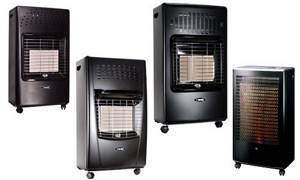
Infrared
| pros | Minuses |
| Possibility of heating open and closed spaces. These models are great for cafes, playgrounds or by the pool. | Burning oxygen. This means that ventilation is necessary in any case. |
| Large coverage area - outdoor models can heat objects at a distance of up to 6 meters. | Low fire protection. Even with the maximum protective measures taken by manufacturers, the device can cause a fire. |
| Mobility. Lightweight and compact models. | |
| High performance. | |
| In most cases, the device operates completely autonomously. |
Advantages and disadvantages of heating with a catalytic heater
Before you buy a catalytic heater, you need to understand all the advantages and disadvantages of this heating method.
Advantages of a catalytic heater:
- A catalytic heater for a summer house or home does not have a negative effect on the microclimate of the room. It does not disturb the natural balance of oxygen and carbon dioxide and does not emit harmful substances that are usually formed during the combustion process, thus maintaining a healthy microclimate;
Catalytic gas heaters are environmentally friendly and safe devices
- The device is much safer than traditional gas ones, since there is no danger of poisoning due to excessive carbon monoxide release. In addition, there is no risk of fire. Such a device can be used without fear in a home, a tent, or an industrial workshop;
- Another important advantage is the ability to regulate the power of the device. This allows you not only to maintain a comfortable temperature, but also to save significantly;
- mobility – even large and powerful devices can be moved quite easily, not to mention compact heaters. According to device owners in reviews, catalytic heaters often easily fit into a bag or backpack.
Despite the abundance of significant advantages, catalytic heaters are not without disadvantages:
- such devices have a fairly limited operating period - about 2500 hours. The fact is that during use the catalyst gradually burns out and after a certain time it needs to be changed. The amount is approximately 2/3 of the cost of exactly the same new equipment, so it’s easier to throw away the old device and buy a new one;
With small dimensions, a portable catalytic heater can easily heat a small room or tent
- The quality and life of a catalytic heater directly depend on how well purified fuel you use. Low-quality gasoline or technical alcohol will very quickly render the device unusable.
Pros and cons of catalytic devices
Like any type of equipment, catalytic heaters have a number of advantages and disadvantages that must be taken into account when choosing.
The devices have many positive aspects:
- compactness and light weight – the dimensions and convenient design of most models make it easy to move and install devices; portable options can easily fit into the trunk of a car or a small travel bag;
- environmental friendliness - due to the fact that the heaters do not emit harmful combustion products and unpleasant odors, a healthy microclimate is maintained in the room, and the risk of carbon monoxide poisoning is completely absent;
- safety - the absence of flame during operation eliminates the possibility of fire, the device can be used without fear in a home, tent, warehouse, or industrial workshop;
- efficiency - operating at full power, the devices consume 100-300 g of fuel per hour, in many models the performance can be adjusted;
- availability of fuel - a cylinder can be easily purchased or refilled with gas at any gas station;
- simplicity of the device - the design is devoid of complex mechanisms, everything is arranged as simply and clearly as possible.
But there are also negative nuances. The most significant disadvantage is the limited service life . Although marketers claim that the plate can work for up to 8 years, in practice, according to some users, the time period does not exceed 2500 hours, which is associated with the gradual burnout of the catalyst during the heating process.
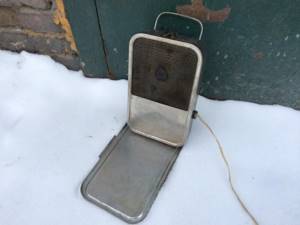
If the device is used around the clock, the catalyst resource will be exhausted after approximately 5 months of operation. The feasibility of replacing a failed plate is questionable: it will cost 2/3 of the price of a new device.
The second disadvantage is a serious dependence on the quality of the fuel mixture . Poorly purified fuel affects heating efficiency and shortens the service life of equipment, quickly rendering it unusable.
Many consumers attribute the high cost of catalytic gas appliances as a disadvantage. On average, a heater of this type with a power of 2900 W costs about 11,000 rubles.

It is not advisable to install catalytic equipment in bedrooms, rooms with high humidity, or near flammable objects. Do not dry wet shoes and clothes on it
Despite the safety of catalytic equipment, during use it is necessary to adhere to the operating rules recommended by the manufacturer.
We also recommend looking at tips for the safe use of bottled gas in an apartment.
Catalytic heater for the garden and home: safety of use
If you are thinking about whether to buy a catalytic heater for your cottage or home, the most important selection criterion will probably be the safe operation of the device.
There is a misconception that catalytic gas heaters can be unsafe and can put the life and health of users at risk. In fact, this is not true. Of course, as with any other device, with a catalytic heater it is necessary to follow safety rules that are designed to reduce potential risks to a minimum.
Long-wave infrared radiation not only does not harm human health, but can also have a positive effect
As for the effect of this heater on the human body, we can say with confidence the following: carbon monoxide is not formed as a result of the oxidation process and, accordingly, does not accumulate in the room. This means there is no risk of poisoning. In the case of using infrared radiation, only long waves are used, which are not only not harmful, but even useful.
Note! It has been repeatedly confirmed that long-wave infrared radiation has a positive effect on both the nervous and immune systems of humans, having a beneficial effect on overall health.
Principle of operation
So, first you should understand what gas heaters are and how they work.
All models have common constituent parts, namely:
- frame;
- heat exchanger;
- heater;
- burner.
These elements are found in all gas heaters - from budget to the most modern.
More expensive models add convenience features such as a thermostat or automatic shutoff.
There is one more common point for all models - they run on gas, natural or liquefied. Using the device, fuel is converted into heat. Such a heater can be connected to both main gas and bottled gas.
The most popular brands and models of catalytic gas heaters
There are not many companies on the heating equipment market that offer truly high-quality products. Therefore, when choosing the option that suits you, you should pay attention to reputable manufacturers. Let's try to figure out which companies' devices are the most popular, and also consider the features of some models from these manufacturers.
The ability to regulate the power of the device allows you to maintain a comfortable temperature in the room, as well as save money
